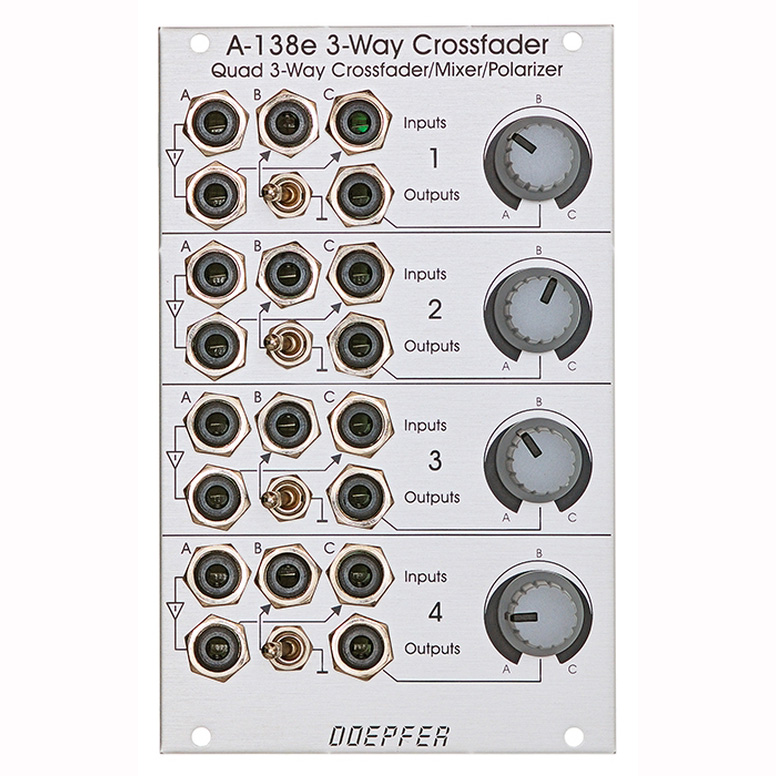Module A-138e contains four identical units that can be used for different crossfading, mixing and polarizing applications:
- Polarizer: only input A is used, inputs B and C are unconnected. In this case the sub-unit works as a polarizer. In the ccw position of the control the signal connected to input A appears at the output, in the cw position the inverted signal, in the center position no signal appears at the output
- Two-way Crossfader type 1: Two different signals are connected to the inputs A and C, switch is in the left position (switching contact of input B is open). In this case the sub-unit works as two-way crossfader between the two signals connected to the inputs A and C. In the center position both signals appear with the same level.
- Two-way attenuator: Two different signals are connected to the inputs A and C, switch is in the right position (switching contact of input B is connected to GND). In this case control is used to attenuate signal A (between ccw and center position) or signal C (between center and cw position). In the center position no signal appears at the output. Similar to the two-way crossfader but without signal in the center position.
- Three-way Crossfader: Three different signals are connected to the inputs A, B and C. In this case the sub-unit works as three-way crossfader. In the ccw position only signal A appears at the output. Between ccw and center position a mix of the signals A and B appears at the output. In the center position only signal B appears at the output. Between center and cw position a mix of signals B and C appears at the output. In the cw position only signal C appears at the output.
- Two-way Crossfader/Polarizer type 2: Two different signals are connected to the inputs A and B. In the ccw position only signal A appears at the output. Between ccw and center position a mix of the signals A and B appears at the output. In the center position only signal B appears at the output. Between center and cw position a mix of signals B and inverted signal A appears at the output. In the cw position only the inverted signal A appears at the output. Useful for CV mixing: e.g. signal A = ADSR, signal B = LFO. In this case one can fade between ADSR ... LFO + ADSR ... LFO ... LFO - ADSR ... - ADSR. In addition the inverted signal of input A is available as a separate output. Potentiometers with center detent and center terminal are used as controls.
 Купить Eurorack модули Doepfer A-138e Quad 3-Way Crossfader/Mixer/Polarizer
Купить Eurorack модули Doepfer A-138e Quad 3-Way Crossfader/Mixer/Polarizer